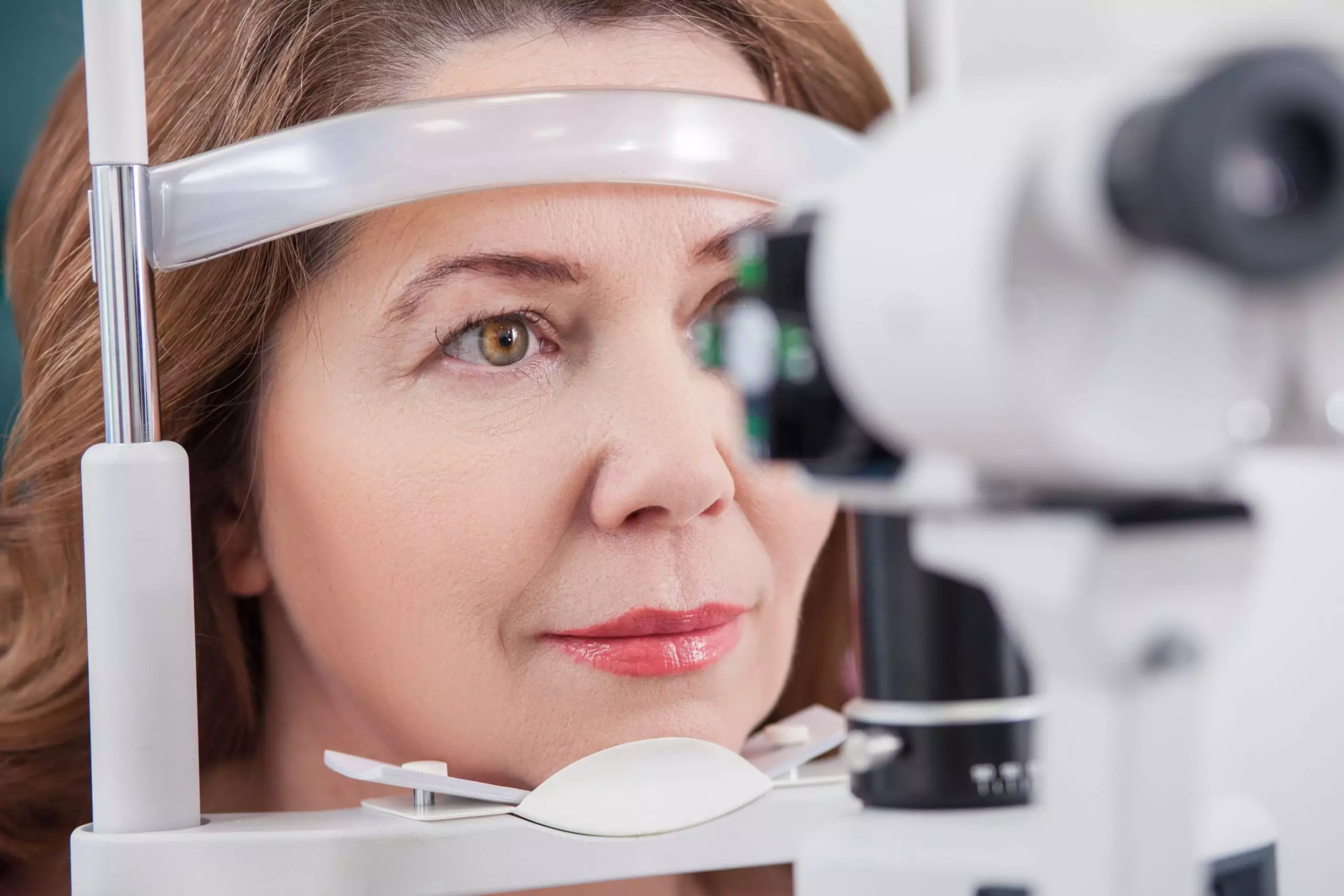
Why There’s a Special Eye Health and Safety Month for Women
Did you know that April is Women’s Eye Health and Safety Month? The initiative was promoted by Prevent Blindness, a national non-profit organization, to increase awareness about women’s higher risk for certain eye-related conditions, the importance of taking action to support eye health and safety, and what women can do to best protect their vision.
Women are at higher risk for certain eye conditions
Per the National Eye Institute, approximately two out of every three people with impaired vision (63%) or blindness (66%) are women. Some diseases and conditions that occur more often in women than in men include:
- Age-related macular degeneration (AMD)
- Cataracts
- Dry eye
- Glaucoma
- Refractive errors, nearsightedness, farsightedness, and astigmatism
- Thyroid eye disease (TED)
Women make up 65% of people with AMD, 61% of people with cataracts, 61% of people with glaucoma, and 56% of people with refractive error.
Why are women at higher risk for these conditions?
There are several factors that we know of so far that contribute to these sex-based disparities. According to an article in The Lancet, two primary factors are:
- Demographics. Since women tend to live longer than men in the U.S., they are more likely to develop age-related eye diseases.
- Social differences. Women historically have, and continue to have, more barriers and less access to healthcare in this country, so are more likely to live with untreated eye disorders.
Research shows that hormones—particularly estrogen, but also progesterone and testosterone—also play a role, particularly in AMD, cataracts, glaucoma, diabetic retinopathy, and dry eye. Many, if not most, ocular tissues contain sex steroid hormone receptors, and are affected by shifts in hormone levels. Dry eye has been linked to hormonal changes that occur during pregnancy, menopause, and active use of oral contraceptives.
Resources for learning and sharing about women’s eye health and safety
Prevent Blindness offers a wide variety of free resources, in both English and Spanish, on their website to help educate and empower patients, caregivers, and advocates, including:
Other resources include:
The SWHR Patient Toolkit, a guide to women’s eye health designed by Prevent Blindness and the Society for Women’s Health Research, to help women initiate conversations with their doctors and take charge of their eye health as they age.
A video entitled “Diabetes, Vision Loss, and Mental Wellness,” featuring a panel discussion involving a patient advocate, a diabetes specialist, and a mental health expert, explores the impact of vision impairment on mental health, and how people with vision loss can remain independent. The video is part of the Diabetes + the Eyes educational series.
Who is most at risk?
In addition to being female, risk factors for various eye diseases and conditions include:
- Older age
- Diabetes
- High blood pressure and/or cholesterol
- Being a current smoker
- Family history of eye disease
- Autoimmune diseases, such as Sjögren’s syndrome
What can I do to support good eye health and protect my vision?
Even if you already live with an eye-related condition, there are steps you can take to nurture your eye health and prevent further vision loss or disruption. Some examples are:
- Get annual comprehensive dilated eye exams. Many common eye diseases have no warning signs, and a dilated eye exam is the only way to detect the conditions early, before significant vision loss. Don’t let eye doctor appointments slide by during pregnancy or your menopausal transition.
- Control your blood sugar. Approximately 90% of diabetes-related blindness is preventable.
- Maintain healthy blood pressure and cholesterol.
- Educate yourself regarding your family’s eye health history, as well as a history of any systemic diseases.
- Eat a diet high in fruits and veggies, particularly dark, leafy greens and carrots, as well as foods containing healthy fats, such as nuts, seeds, and oily fish.
- Maintain a healthy weight. Excess weight and obesity can increase your risk of various medical conditions which can, in turn, affect your vision.
- Protect your eyes from harmful UV rays and flying particles by wearing sunglasses outdoors, and wearing goggles when working with hand tools or in windy weather.
- Rest your eyes periodically, to avoid strain.
- Clean your hands before touching your eyes, and clean and store your contact lenses as directed, to avoid infections.
- Don’t smoke.
Making personal lifestyle changes is only one way of supporting eye health and safety. Another is advocating for women’s access to eye-related health and vision care. Join an organization or start your own grassroots initiative to lobby local, state, and national legislators for broader, more affordable, access to women’s eye care.

